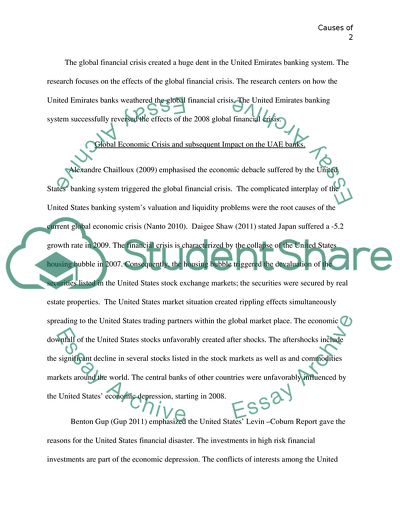Cite this document
(Causes of the Global Financial Crisis and Its Impact on the Banks Case Study, n.d.)
Causes of the Global Financial Crisis and Its Impact on the Banks Case Study. Retrieved from https://studentshare.org/finance-accounting/1583923-research-the-causes-of-the-global-financial-crisis-and-its-subsequent-impact-on-the-banks-behavior-on-uae-banks
Causes of the Global Financial Crisis and Its Impact on the Banks Case Study. Retrieved from https://studentshare.org/finance-accounting/1583923-research-the-causes-of-the-global-financial-crisis-and-its-subsequent-impact-on-the-banks-behavior-on-uae-banks
(Causes of the Global Financial Crisis and Its Impact on the Banks Case Study)
Causes of the Global Financial Crisis and Its Impact on the Banks Case Study. https://studentshare.org/finance-accounting/1583923-research-the-causes-of-the-global-financial-crisis-and-its-subsequent-impact-on-the-banks-behavior-on-uae-banks.
Causes of the Global Financial Crisis and Its Impact on the Banks Case Study. https://studentshare.org/finance-accounting/1583923-research-the-causes-of-the-global-financial-crisis-and-its-subsequent-impact-on-the-banks-behavior-on-uae-banks.
“Causes of the Global Financial Crisis and Its Impact on the Banks Case Study”. https://studentshare.org/finance-accounting/1583923-research-the-causes-of-the-global-financial-crisis-and-its-subsequent-impact-on-the-banks-behavior-on-uae-banks.


